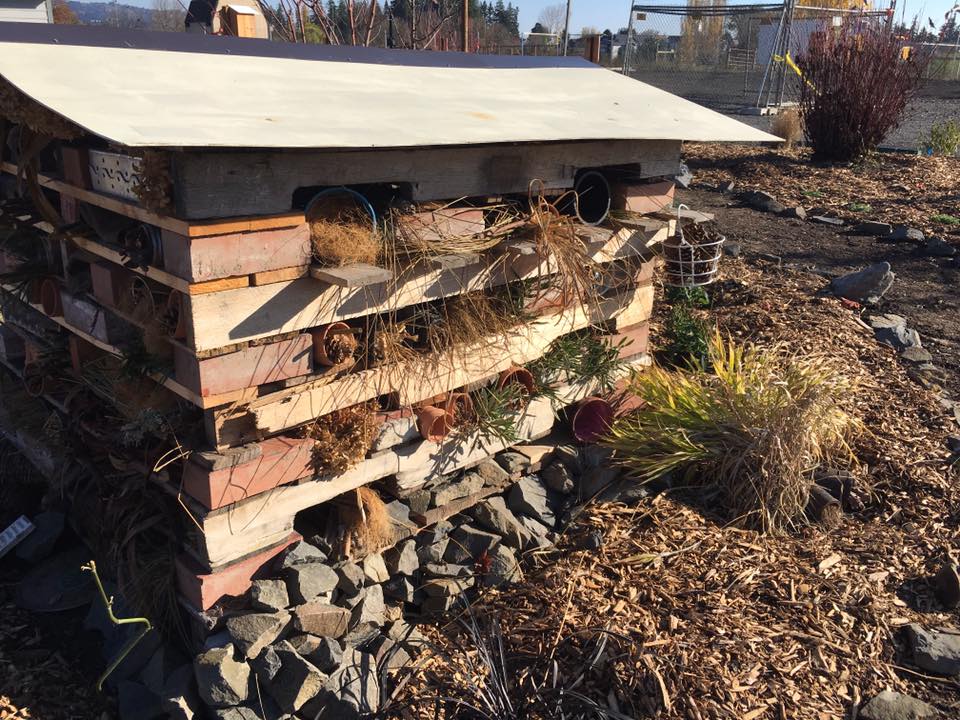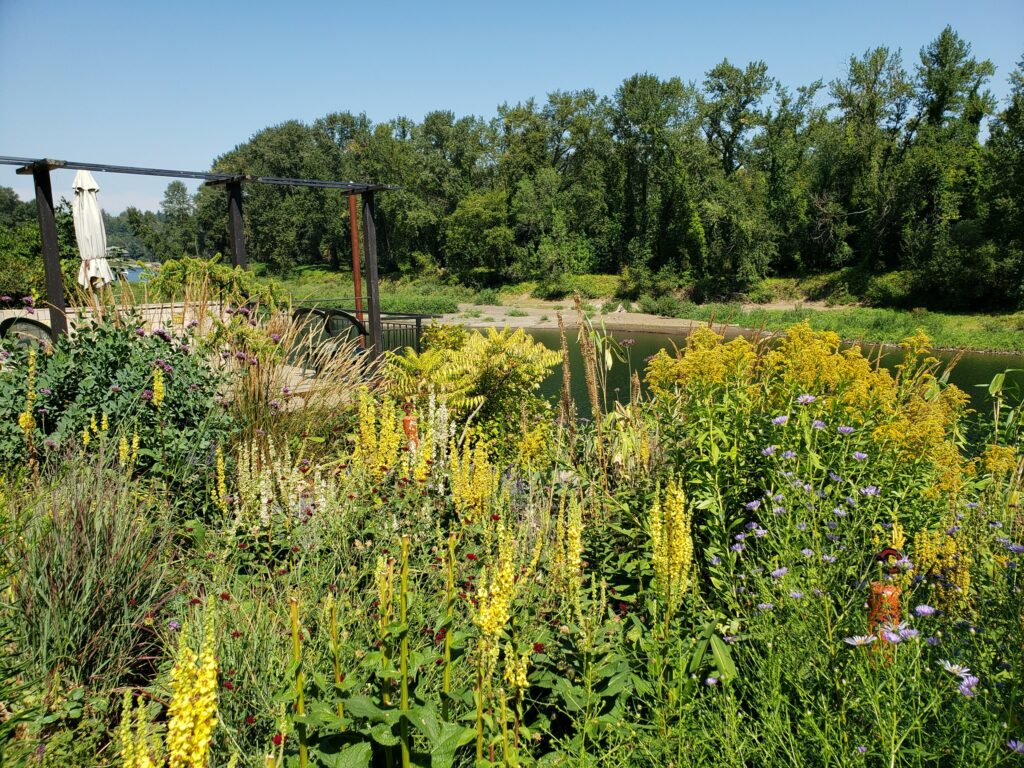Today, I want to shine a spotlight on and celebrate all of the great work that Master Gardener volunteers do in support to support native species conservation and address concerns regarding invasive species.
In Oregon, many of our Master Gardener volunteers focus their efforts to conserve native species on promoting ways to help native bees and other pollinators thrive in home and community landscapes. The Linn County Master Gardeners were real innovators in developing educational outreach related to native pollinator protection. They host the annual BeeVent Conference, write a newsletter for mason bee enthusiasts, and host online question and answer sessions for those wanting to learn more about how to care for native mason bees.

In Washington County, Master Gardeners have built mason bee demonstration nests at the PCC Rock Creek Education Garden. And, Master Gardener Ron Spendel dedicates extensive time to the study of mason bee nesting behavior, and effort that helps gardeners create better habitat for these beautiful bees.

In addition to promoting mason bee conservation, Washington County Master Gardeners have several ‘insect domiciles’ at their PCC Rock Creek education garden. These structures add visual interest to a garden, and provide year-round habitat for a variety of insects and arthropods to nest. The idea is that beneficial predators, including carabid beetles, rove beetles, and spiders take up residence in the domicile, and help protect the plants from garden pests. I hope to eventually work with the Washington County Master Gardeners to break down the structures and document the diversity of arthropod and insect residents within.


Master Gardeners across the state support native bee conservation and education, as community scientists who have partnered with the Oregon Bee Project to document the current status of Oregon’s bees. The Oregon Bee Atlas’ four year mission (2018-2021) is to train volunteers to explore Oregon Counties, to seek out new native bee records for the state, to boldly go where no amateur melittologist has gone before! These new specimen records will be added to newly digitized historic records from the Oregon State Arthropod Collection to build the first comprehensive account of the native bee fauna of Oregon. Master Gardeners in nearly every Oregon county participate in this statewide effort.
Master Gardeners are also stewards of native plant across the state. In our applied research program, we have studied 23 of Oregon’s native plant species, to better understand which are most attractive to pollinators ~ as well as to gardeners! Our 3-year field study identified a number of species were highly attractive to native pollinators across all years, including the Phacelia heterophylla, Solidago candensis, and Aster subspicatus. Unfortunately, these three plants were not attractive to many gardeners. We found that Gilia capitata and Eschscholzia californica were highly attractive plant to both native pollinators and to consumers. Clarkia amoena and Anaphalis margaritacea were moderately to highly attractive to native pollinators in 2/3 years of our field study. These plants were also found to be moderately attractive to gardeners. Finally, we established that several non-native plants that are popular with consumers and touted as bee plants are highly attractive to non-native honey bees and, but not native bees.

One of the things that we’ve worked really hard to do, is to get our data out to gardeners in a variety of formats, including our Garden Ecology Blog, talks across the state (13 talks and 2 webinars in 2020, reaching more than 1,600 people), videos of our research in progress, and native plant recommendations in a new Extension publication. It has been extremely gratifying to see gardeners starting to utilize some of the native plants that we’ve been studying in ornamental garden landscapes.

Master Gardeners also help to protect Oregon’s native species, by participating in research and education efforts related to invasive species detection and eradication. Earlier this year, Master Gardener volunteers in Jackson and Josephine County assisted the Oregon Department of Agriculture and OSU Extension in setting out and monitoring gypsy moth traps. Gypsy moth poses a significant environmental and economic threat to Oregon’s forests. In a normal year, the Oregon Department of Agriculture sets out more than 10,000 traps to find incipient populations, that can be effectively eradicated before moth numbers grow and expand to new areas. In 2020, COVID made it more difficult for the ODA to conduct their normal trapping and monitoring operations. However, Master Gardeners were ready and able to lend a hand.
Master Gardeners also help to monitor invasive species that pose a threat to Oregon’s forest, via the Oregon Pest Detector Program.
It should be worth noting . . . that even though Asian Giant Hornet is not yet in Oregon . . . that it was the actions of dedicated volunteers, setting out traps throughout the summer, that helped scientists locate and eradicate the first Asian Giant Hornet nest in the United States. I am hoping that our colleagues in Washington State will be fully successful at locally eradicating this new invader. However, if need be, I also have great confidence that Oregon’s Master Gardener volunteers will heed the call to help keep this and other potential invaders from wreaking environmental and economic havoc in our state.
Thank you, Master Gardeners . . . for your love and protection of the natural world. You are helping to conserve and protect the natural history and heritage of our state, for future generations. You are helping to open people’s eyes to the beautiful insects that would otherwise be overlooked. You’re pushing boundaries with garden design, by placing native plants where they had previously had no place and creating habitat for insects.
Every time you build insect or bird habitat into your garden or share information about the ecological beauty of native species, you are making a difference. Your choices matter, and are helping to create a better world for all.


